
When calculating the cost of building a treehouse, consider the size, types of materials, and design. This guide will help you figure out what to budget.
Baseboards built for bathroom battles
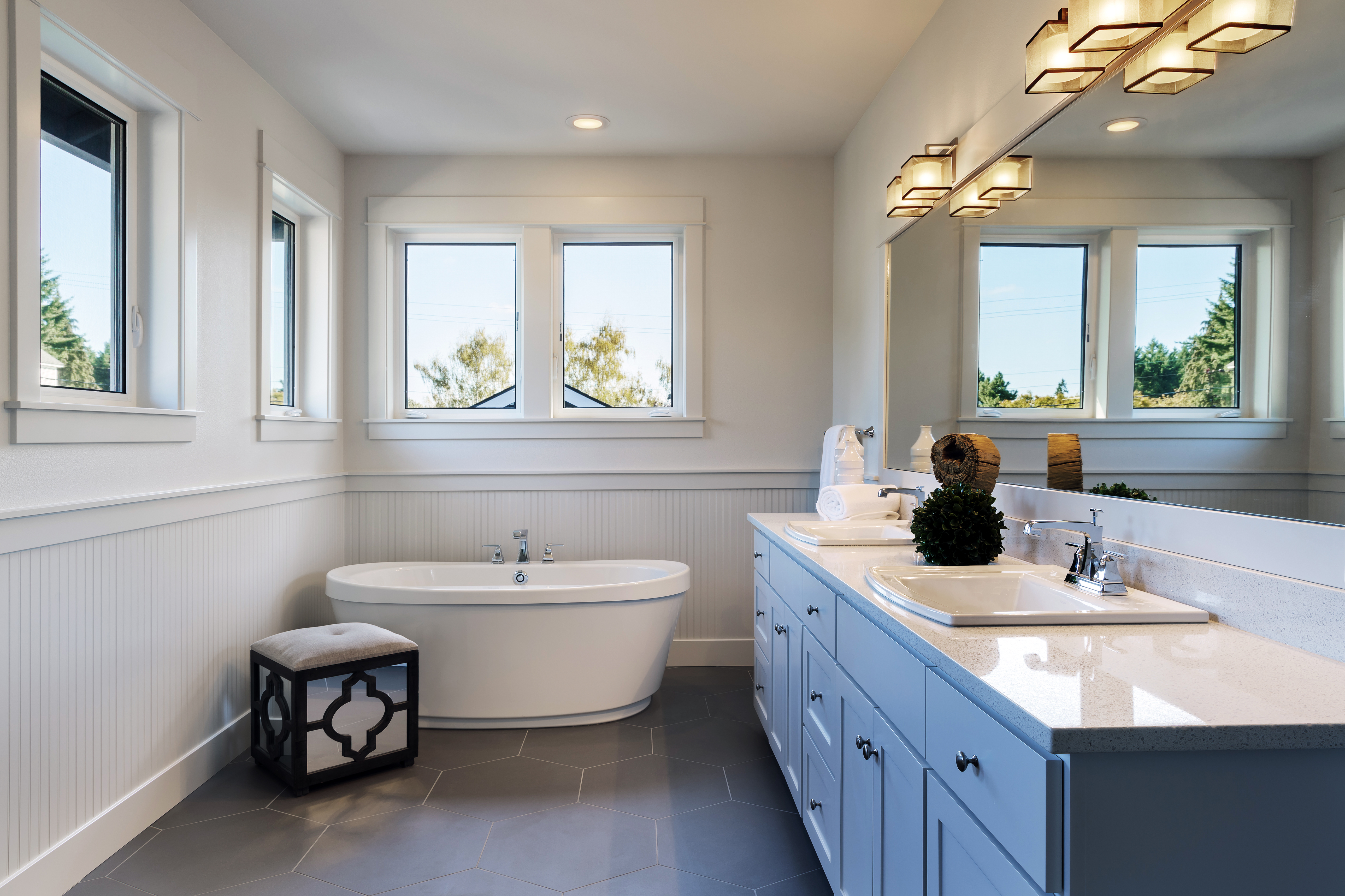

Hire a baseboard installation pro to identify the best baseboard for your bathroom based on your budget, style, and needs.
While tile baseboards are durable, easy to clean, and water-resistant, they’re also expensive.
Engineered wood baseboards are affordable, durable, and aesthetically pleasing.
While polyurethane baseboards cost the most, they might be worth it if you don’t want mold, rot, or warping.
Choosing the best baseboard for a bathroom is about more than just picking a style. It’s about finding materials that can stand up to moisture, humidity, and daily wear. While aesthetics matter, bathrooms demand types of baseboards that won’t warp, rot, or grow mold over time. Weigh all your baseboard options to strike a balance between function and style to keep your bathroom clean and visually appealing.
| Types | Moisture Resistance |
|---|---|
| Tile | High |
| Solid wood | Low |
| Engineered wood | Moderate |
| PVC | High |
| MDF | Moderate |
| Polyurethane | High |
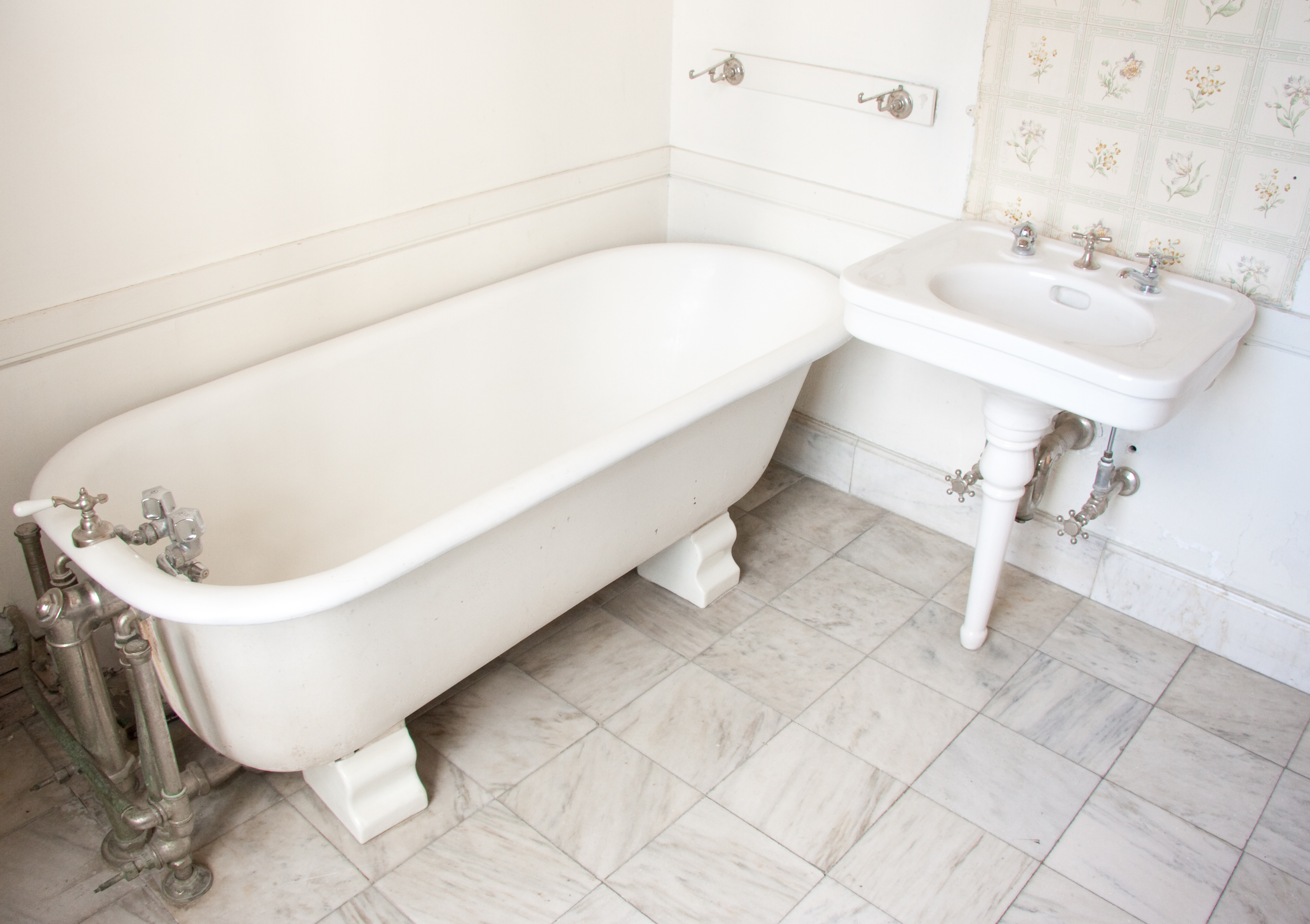
Tile baseboards are made from ceramic or porcelain and are best used in bathrooms that already have tile flooring or walls. They offer a neat, uniform look and provide high water resistance. Tile baseboards are installed as a continuation of floor or wall tiles and are permanently affixed with adhesive and grout. Plus, learning how to clean baseboards made from tile is very simple and easy to add to your chores list.
| Pros | Cons |
|---|---|
| High water resistance | Expensive to install |
| Durable | Requires professional installation |
| Easy to clean | Harder to replace |
Best for: High-moisture bathrooms where waterproofing and durability are top priorities.
Solid wood baseboards add warmth and natural beauty to a bathroom. However, because wood is porous, it’s highly susceptible to water damage. To use solid wood in a bathroom, it must be thoroughly sealed and maintained to prevent warping or mold growth.
Hardwoods like oak or maple are the best wood for baseboards in bathrooms because they’re denser and more resistant to moisture than softer woods like pine. Cedar is also a good option, thanks to its natural resistance to rot and mildew.
| Pros | Cons |
|---|---|
| Timeless appearance | Low moisture resistance |
| Durable when well-maintained | Can warp or rot in damp spaces |
| Easy to paint or stain | Requires frequent maintenance |
Best for: Powder rooms or half-baths with low humidity.
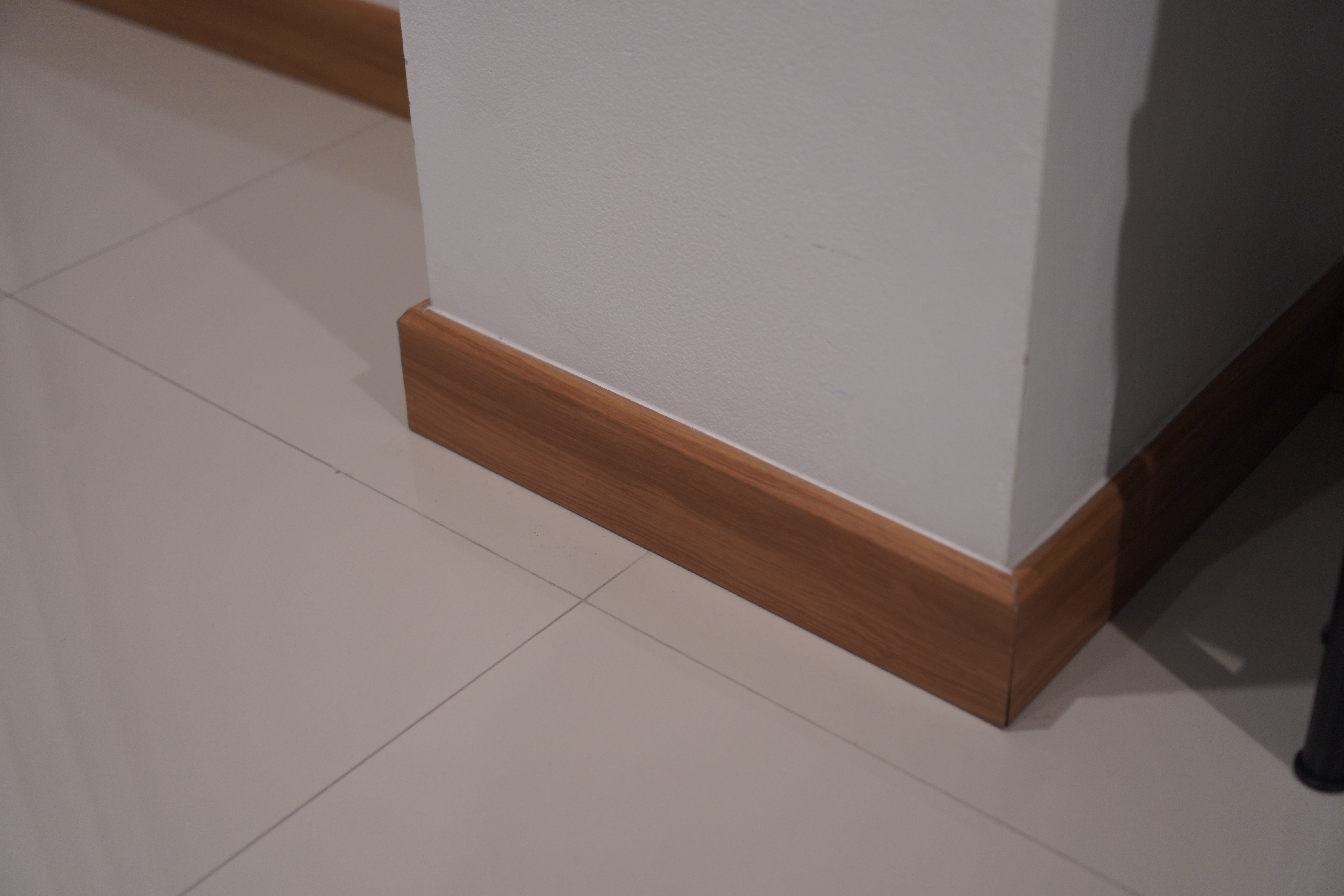
Engineered wood baseboards are made from compressed wood fibers bonded with resin and have a laminate or sealed surface. This construction makes them more moisture-resistant than solid wood while still offering a wood-like appearance. Engineered wood baseboards offer a good balance between cost, durability, and appearance.
| Pros | Cons |
|---|---|
| More moisture-resistant than solid wood | Vulnerable to damage if not sealed |
| Affordable | Not as long-lasting as other options |
| Easy to install | Can lose sealant over time |
Best for: Homeowners who want a traditional look with better moisture resistance than real wood.
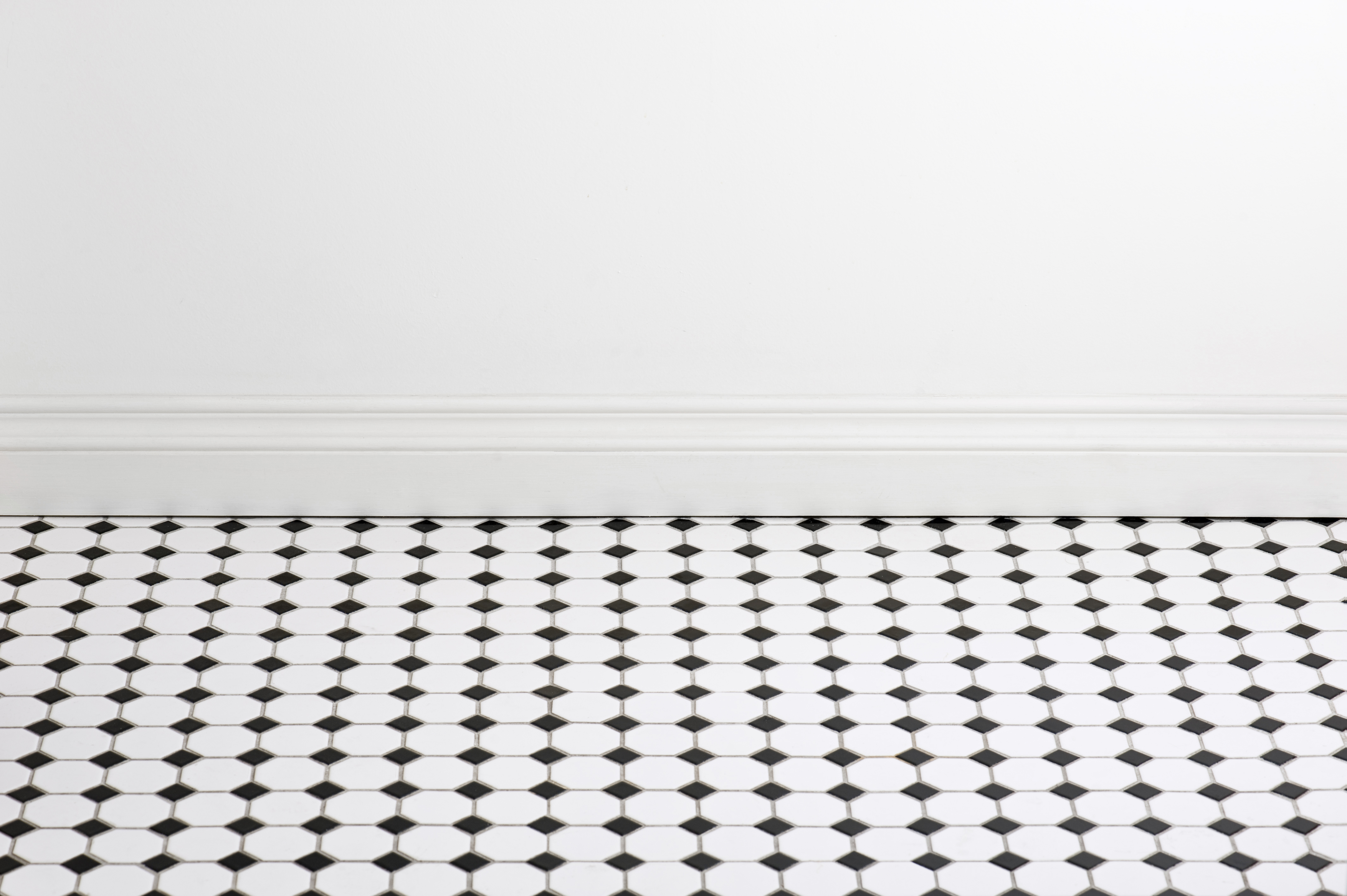
PVC baseboards are made from plastic and are completely waterproof. They don’t absorb moisture or support mold growth, making them one of the best materials for humid or wet environments. PVC is lightweight, affordable, and easy to install.
| Pros | Cons |
|---|---|
| High moisture resistance | Limited color and style options |
| Resistant to mold and mildew | Can look less aesthetically appealing |
| Inexpensive | Lacks impact resistance |
Best for: High moisture bathrooms where durability and low maintenance are a priority.
Medium-Density Fiberboard (MDF) baseboards are made from wood fibers glued under heat and pressure, creating a smooth, paintable surface. While MDF is affordable and great for a clean look, it’s vulnerable to water damage unless sealed with a waterproof coating and painted.
When comparing MDF baseboards versus pine for wood-style options, MDF provides a smoother surface for painting and is more affordable. Pine, however, is more durable and holds up better in humid conditions.
| Pros | Cons |
|---|---|
| Easy to paint | Poor moisture resistance without sealing |
| Affordable | Swells and crumbles when exposed to water |
| Simple installation | Swells and crumbles when exposed to water |
Best for: Low moisture bathrooms on a budget.
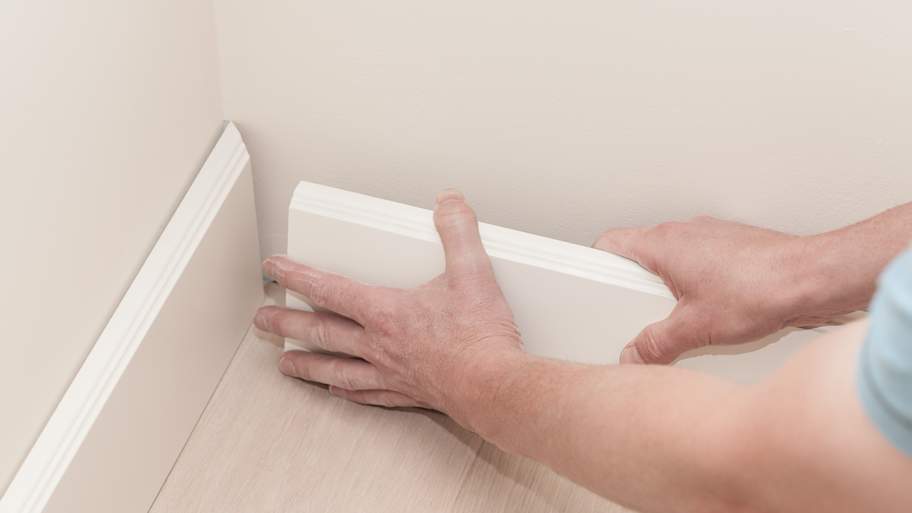
Polyurethane baseboards are synthetic and designed to mimic wood but with far better water resistance. They’re lightweight, flexible, and resistant to mold, mildew, and rot. These baseboards are easy to paint and ideal for DIY installations in bathrooms of all sizes.
| Pros | Cons |
|---|---|
| High water resistance | Can be damaged if mishandled |
| Won't mold, rot, or warp | Not a strong as wood |
| Easy to install | More expensive than other options |
Best for: Bathrooms that need water-resistant trim with a stylish finish.
Moisture resistance is top priority when choosing the best baseboard for your bathroom. Bathrooms are exposed to high humidity, steam, and occasional water splashes, all of which can damage materials not suited for damp environments. Materials like tile, PVC, or polyurethane are excellent options because they resist water and mold. Solid wood or unsealed MDF can warp, swell, or rot over time. While engineered wood can help mitigate solid wood's issues, it should be properly sealed or coated with a waterproof finish.
Beyond moisture resistance, consider style, durability, and maintenance needs. Baseboards should complement the overall bathroom design, whether you’re aiming for sleek and modern or warm and traditional. Some materials, like tile and polyurethane, can be more decorative, while others, like PVC, are functional but plain.
You'll also want to think about ease of installation. Some materials require special tools or professional help. For example, you'll want to hire a local baseboard installer if you choose tile. Pros know how to install baseboards of any material to improve moisture resistance and maintain the desired look. Plus, their knowledge of how to fill the gap between the floor and the baseboard reduces the risk of moisture getting trapped and causing damage beneath the materials. When this damage happens, the baseboards will need to be replaced. The cost to replace baseboards ranges between $800 and $2,250.
From average costs to expert advice, get all the answers you need to get your job done.

When calculating the cost of building a treehouse, consider the size, types of materials, and design. This guide will help you figure out what to budget.
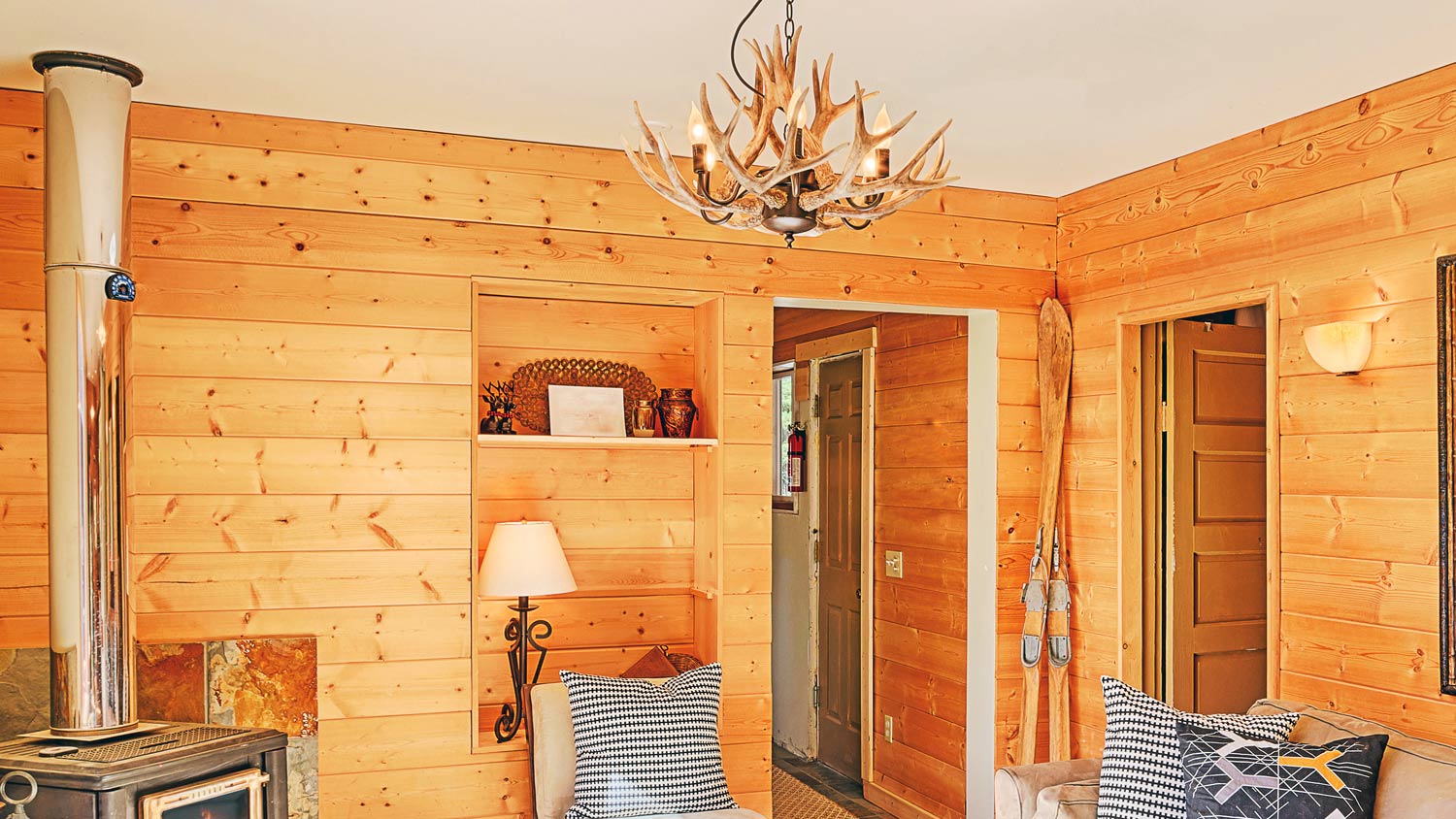
Get the facts on the cost to remove wood paneling, including average prices, key factors, and tips to help you budget your project with confidence.

The cost to install wainscoting depends on labor, materials, and square footage. This guide will help you budget for your next project.
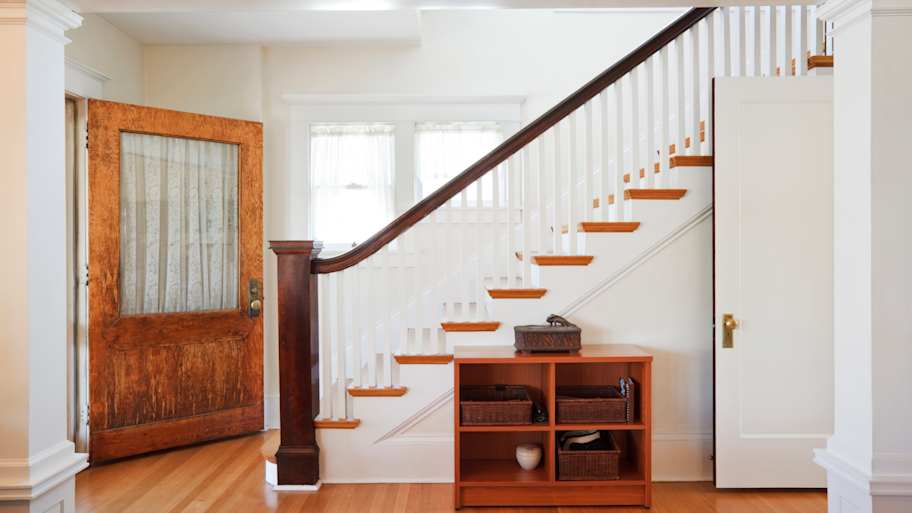
Learn how to replace a broken or damaged railing spindle in just a few steps with basic tools. See how to measure, remove, and install a new spindle safely.
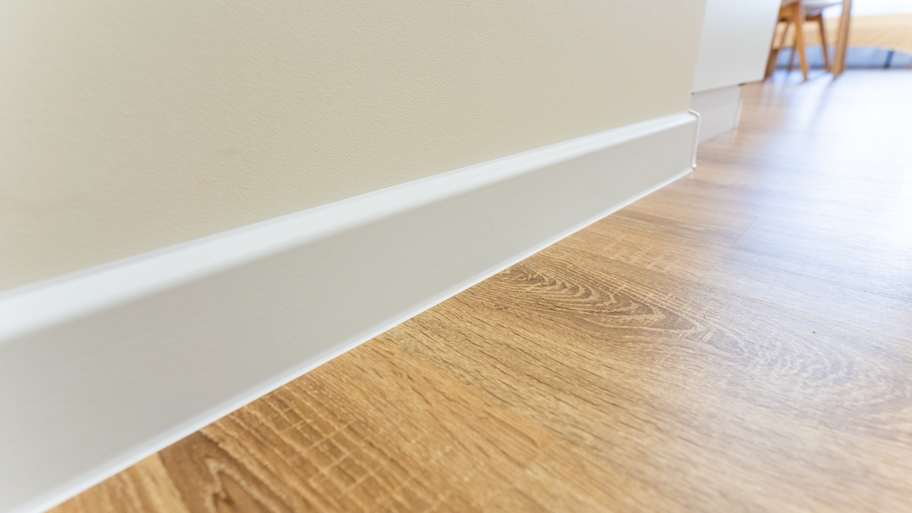
Shopping for budget-friendly wood trim options? Compare MDF baseboards versus pine for a look that best suits your design needs while staying on budget.
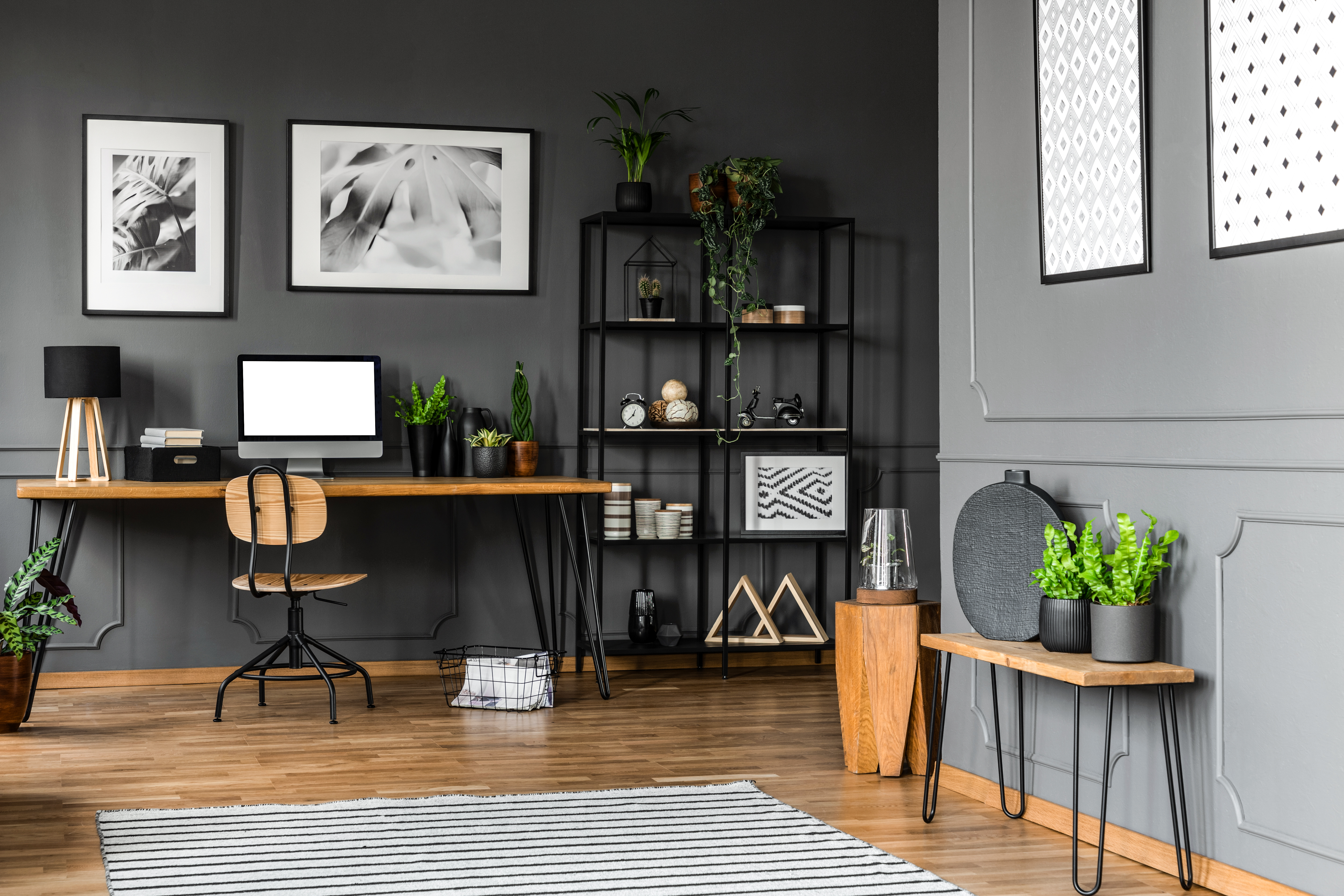
PVC is plastic, and wood is natural, which is just one of the many differences between these two baseboard materials. Learn the pros and cons of each to help you decide.